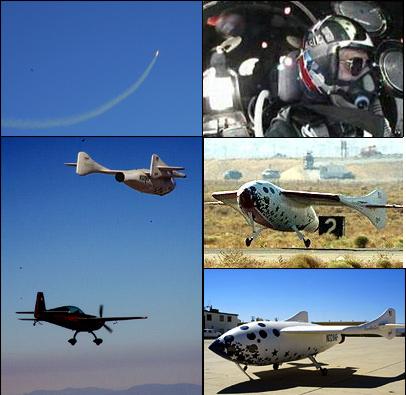A malfunction in the control system of the spaceship caused it to lose 10 kilometers from the planned height and almost to the death of the pilot* luckily - the backup system worked
Avi Blizovsky

It could have ended completely differently. The crew that made the historic private flight into space will have to work hard to find what went wrong with the flight control systems on the SpaceShipOne spacecraft. The spacecraft behaved in an unpredictable manner between the time its engines were ignited and the time it reached its peak altitude, 100 kilometers above Earth. Pilot Mike Melville had to use the backup system to control SpaceShipOne.
The Scaled Composites team says that no attempt will be made to win the $10 million prize until the cause of the malfunction is understood.
Spacecraft developer Brett Rutan made a preliminary assessment of the malfunction, which could have killed pilot Melville and downed a $25 million effort to demonstrate a reusable suborbital passenger spacecraft.
The anomaly that happened to us today is the aviation safety malfunction that we have experienced throughout the program so far," Rotan said, during a press conference after the flight.
The fact that our backup system worked and that we were able to make a successful landing gives us a good feeling. said Rutan, who also added that the crew sensed a malfunction seconds after SpaceShipOne's engine ignited and a more serious malfunction occurred when Melville reached the peak altitude of its suborbital flight.
He attempted to adjust his altitude using the nose maneuver when the flight control system that activates the spacecraft's lift racks failed.
Melville activated the backup system but his ship was already 35 kilometers from its course. The problem also caused erosion in the engine's performance during the climb into space and therefore Melville was unable to reach the height of 110 kilometers above the atmosphere, which he was aiming for. In the end, the spacecraft reached a height of 100 kilometers and 120 meters - enough to receive not only the astronaut's wings but also to receive a mention in the Guinness Book of Records.
Rutan said the spacecraft's next flight was to be the first of two needed to fulfill the conditions of the X-PRIZE competition.
The prize of the X-PRIZE Foundation of St. Louis, Missouri, is 10 million dollars in cash and of course a great honor for the team that will send a team of three people to the height reached by the spacecraft SpaceShipOne on Monday, and then repeat the flight in the same vehicle within two weeks.
Unlike Monday's flight, in the flight where they will try to claim the award, at least two more passengers will have to participate, or at least a weight equal to two passengers.
SpaceShipOne, however, will be grounded until the crew locates the cause of the flight control system failure. "There is no way we will fly again without knowing what the cause is and without being sure that we have fixed the fault, because it is a particularly critical system." Rotan said.
